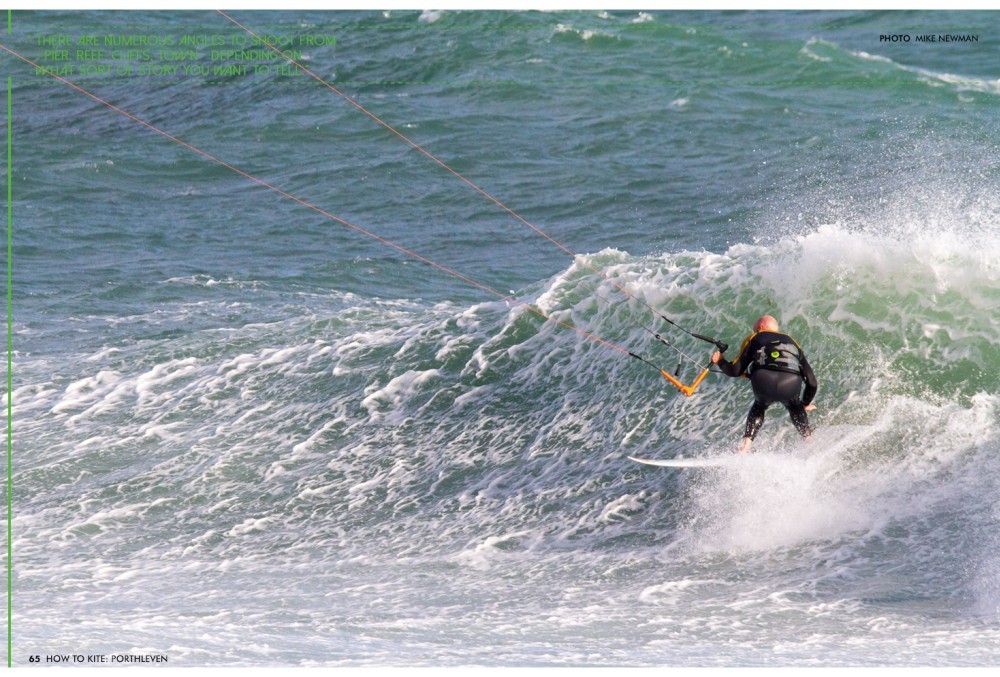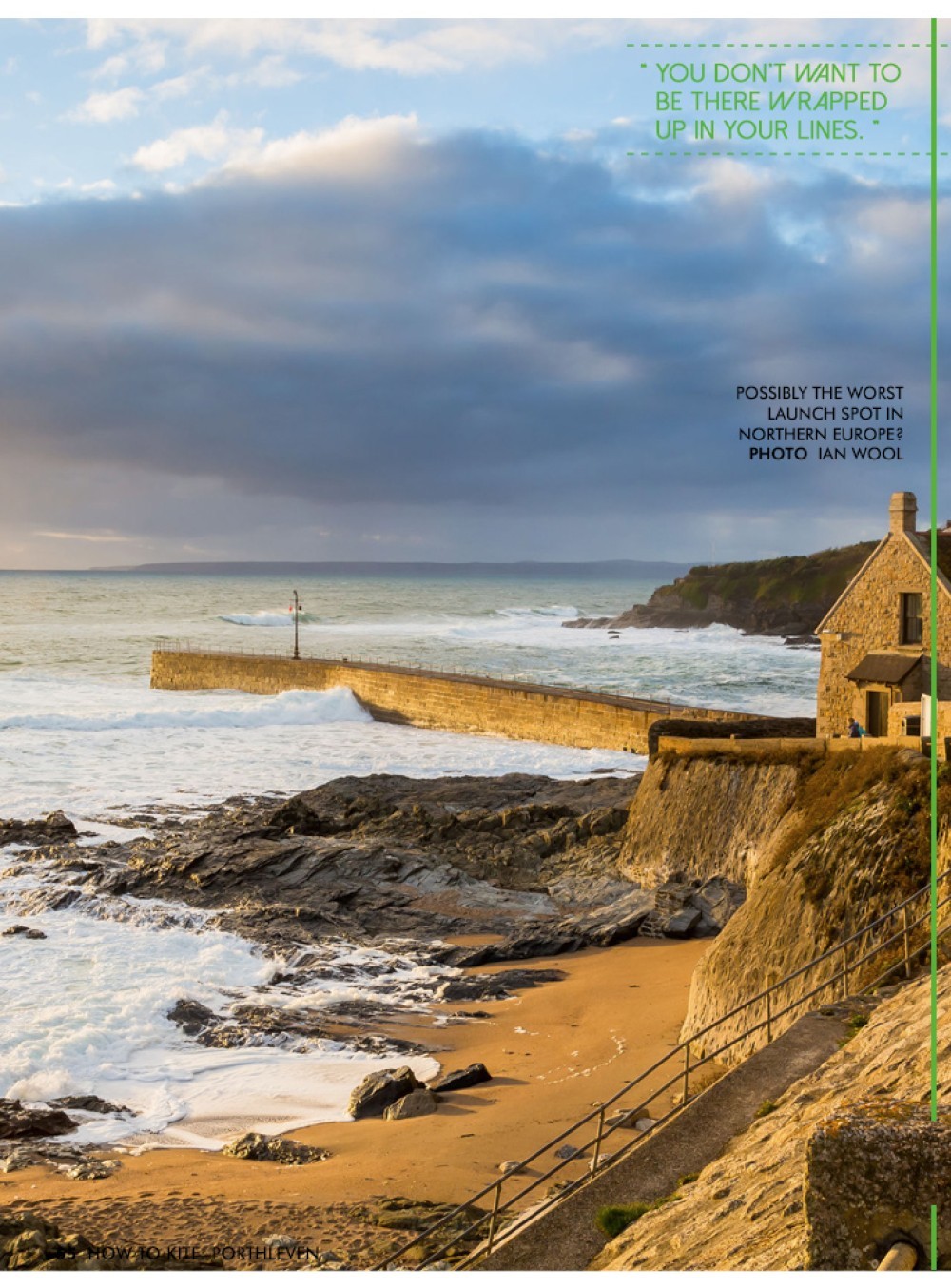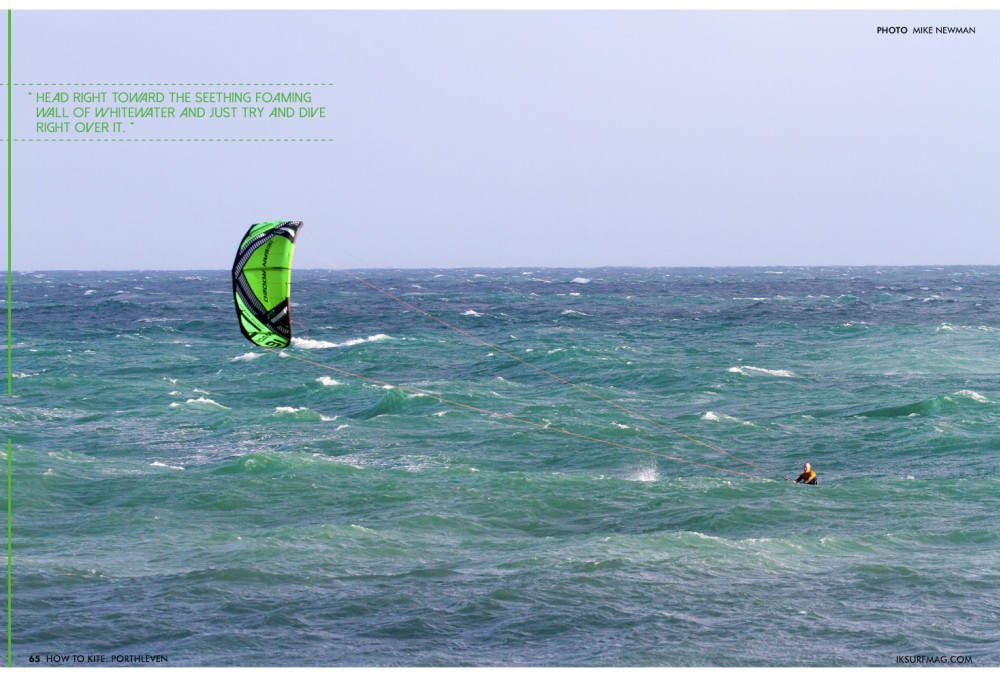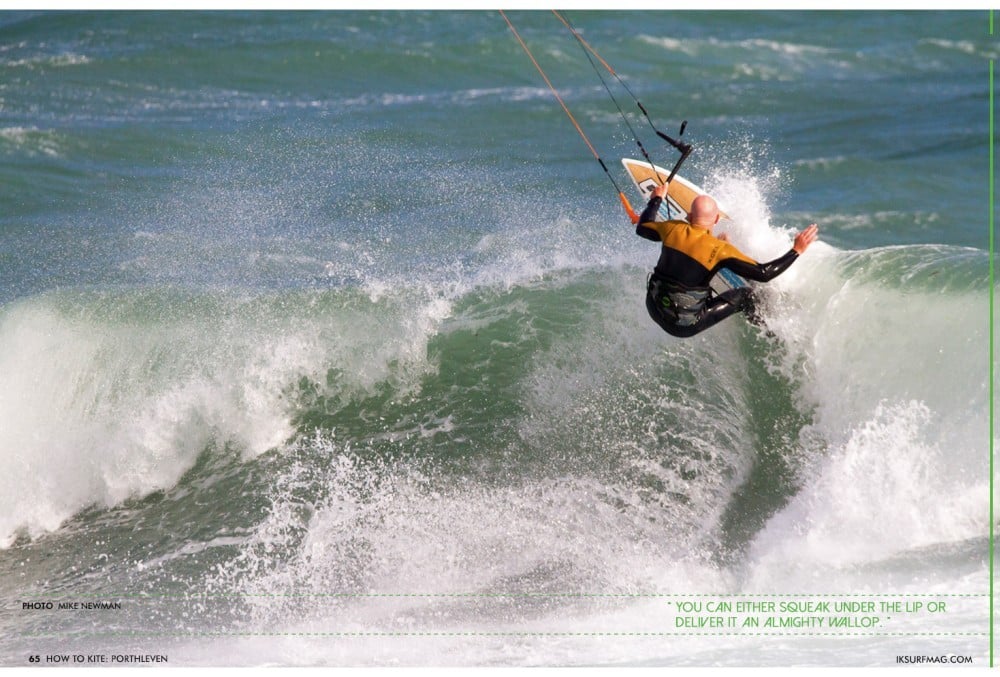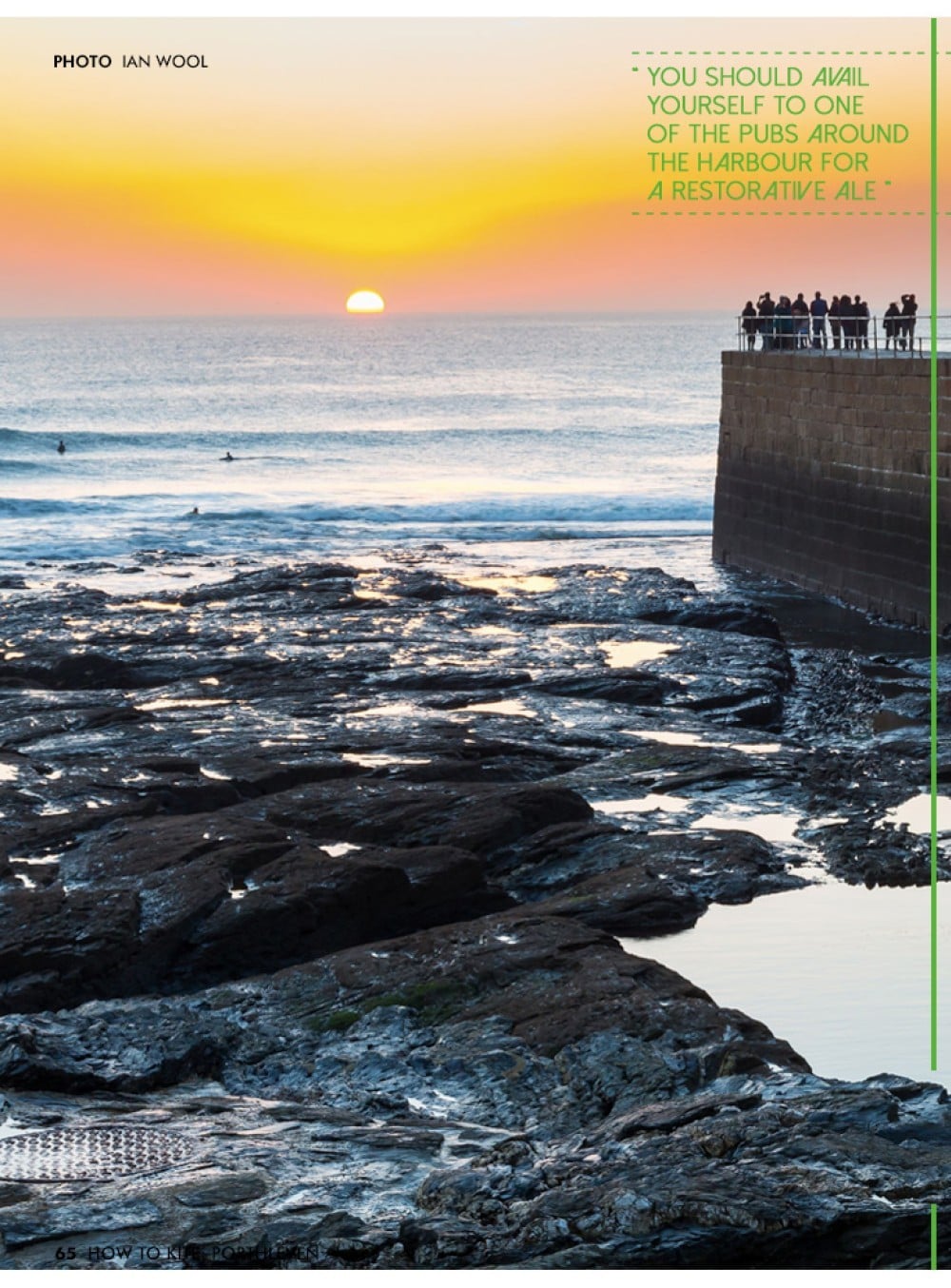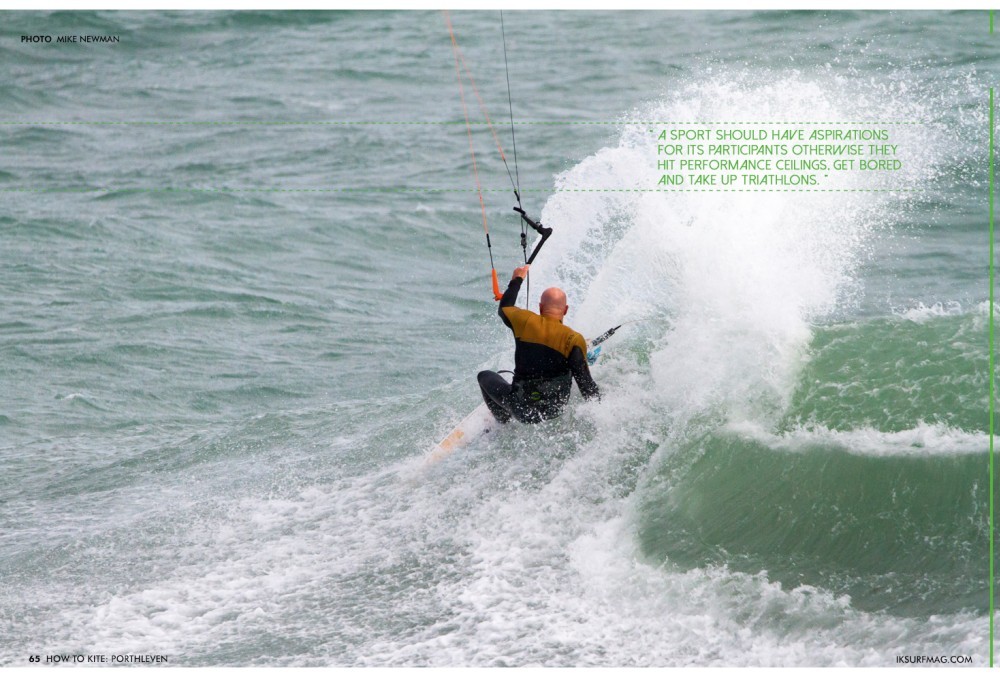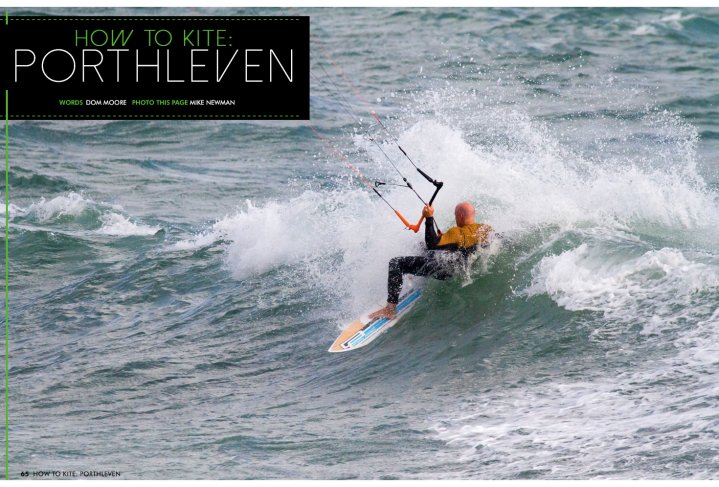
How To Ride - Porthleven
Issue 65 / Fri 20th Oct, 2017
We have a new “How To Ride” series featuring some of the best spots on the planet, giving you the details you need to survive a session there. In our first edition, local hero Dom Moore takes on the most dangerous launch spot in Northern Europe and possibly the world to kite Porthleven!
In a new series of articles we will be looking at detailed how to guides for certain spots, sometimes these places will be aspirational, sometimes they will be accessible. For the first feature in this series we asked seasoned big wave shredder Dom Moore to give us the low down on Porthleven. A spot we’ve ridden, and rate as perhaps the most dangerous launch in the UK, yet if you make it out to the reef, the wave is incredible…
I think this must be the most published kitesurfing wave in Northern Europe. I’d also say considering the amount of people that kite it, and the quantity of photos taken, it’s the most inversely proportional. It is that rarest of precious gems for a kitesurfer – a right-hand reef break.
Tucked away on the Lizard Peninsula in the western wilds of Cornwall, it is an incredibly beautiful and fascinating place. The Lizard Peninsula itself is interesting, the name possibly coming from the Cornish phrase Lys Ardh, meaning ‘high court’ though no traces of this high court exist, maybe it was claimed by the sea during one of the fearsome storms that batter and shape the coastline and culture of this land.
Porthleven is a photographer’s dream. It’s a reef break, so all the action is focussed in an area the size of a squash court, it breaks quite close to the shore, and there are numerous angles to shoot from – pier, reef, cliffs, town - depending on what sort of story you want to tell. During surf sessions, photographers will often be in the water as it’s an easy swim out from the harbour, but when it’s blowing 30knots, and the kites are up, this is a less practical strategy.
For kiters, Porthleven is equal parts dream and nightmare. Let’s start at the beginning: the launch. There will always be somewhere more foolhardy to launch a kite, but as a quasi-regular launch spot ‘Levvy is among the sketchiest. The beach is tiny and hemmed by huge granite rocks, the wind is flukey as hell thanks to the harbour wall just upwind, there’s a massive sea wall to your left, and to your right, a very intimidating shore break that gets bigger and harder to escape from the further downwind you go. Google maps are deceptive; what looks like a long stretch of friendly sand downwind is, in fact, the Loe Bar, for the sake of brevity let’s say that you don’t want to be there wrapped up in your lines. Just keeping your kite up and then trying to launch your buddy’s is quite a test for the nerves.
Then comes the frantic body drag out through the shore break. Hopefully, you’ve timed it right and chosen the correct kite size. After a few duck dives, you should be clear and then comes the long haul upwind past the harbour, to the break itself. Remember that as you tack out to sea, your trajectory puts your escape route further and further along the Loe Bar, so it’s a good thing you have a newish kite bar with trustworthy lines and to have checked all your equipment before heading out.
Then you arrive at the reef. It’s a classic corner set up like a short point break or reef pass. It takes a few goes to get deep enough into it, and when it at last looks like you’re locked in far enough to get a decent hit you get pinned inside by a rogue set that wraps around the entire reef. This is when you experience your first Porthleven rumble. You can’t go left as that will take you straight into the dry granite reef so your best option is to head right toward the seething foaming wall of whitewater and just try and dive right over it. Let the board leash do the dirty work (obviously, you are wearing one, you HAVE to here!), yank on the right-hand side of the bar and hope for the best. Once clear, gather yourself together, tack back upwind and have another crack at it.
Your first session is in the bag, and with the shifting of the tide, the wave quality is not what it was an hour ago, so it’s time to head in. The landing zone is the same as the launch zone, be careful you don’t overshoot it because remember, the Loe Bar is not your friend. Also don’t come in too upwind of it either as you’ll run into the hidden rocks or ‘shit pipe’. Everyone has their methods of landing, and this can change depending on the circumstances. Plan that no one will be there to catch your kite and that an elderly person will be exercising a small dog on the tiny beach right where you want to come in.
This wave has given me my most memorable sessions in kiting. It’s also delivered the worst beatings (seven stitches to the head and a woozy drive to the hospital), broken more of my kit, and caused me to turn away and save it for another day more than any other spot. No one should be in any rush to kite here without doing a proper reccy first, in fact, paddling out on a surfing day would be the best way to figure it all out. There are plenty of spots in Cornwall that offer more accessible and longer waves with far fewer consequences (The Bluff and Marazion are close by and Daymer Bay at the other end of the county all work in the same wind direction).
To be sensible, we must consider the requisite rider level to a) manage the wave and b) self-rescue. This is not about fluffing egos but sincerely saving some poor unfortunate soul from disaster. I’d say that you should be comfortable paddling into this wave on a surfboard and thus deal with all the things that can go wrong without the support of a kite. You’ll know if your kitesurfing is as strong as your paddle in surfing, and if it is, great! It’s definitely not a place for twin tips or tricks on the waves, and once again, the Loe Bar beach is not anywhere you want to be going near with a kite.
The wave itself can deliver anything from carvable speed walls and whackable lips to huge sections to float over and the odd barrel. A big bumpy roll in on the outside turns into a huge face for your first carve, before running through to the inside after which the power concentrates, and you can either squeak under the lip or deliver it an almighty wallop. If you like going vertical on 'skate bowl' waves, this is it.
Back on land, you should avail yourself to one of the pubs around the harbour for a restorative ale; your parasympathetic nervous system will thank you for it. As you unwind, consider briefly the history of Porthleven. It wasn’t so long ago that this small village was an isolated harbour of refuge, with the only contact with the outside world was a paper being delivered once a week. The wives of the town would sit on the shoreside, making and fixing fishing nets, waiting and hoping for their fisherman husbands to come home safely, and with a good catch.
Around the turn of the 20th century, the reef was dynamited to create a safer channel for the fishing vessels, and this is what gives the wave its wrap-around effect. Today the harbour is still full of colourful boats, but the economy of the area is supported mainly by tourism, and so Cornwall must walk the fine line between providing infrastructure and services to the influx of visitors and retaining the culture and beauty that sets it apart in the first place.
Is it exploitative to run a kitesurfing spot guide to Porthleven? After all, four kites up and it’s crowded; well, it’s already the most well-known reef break in the UK among surfers, so it's hardly a secret. It’s an aspirational wave, and a sport should have aspirations for its participants otherwise they hit performance ceilings, get bored and take up triathlons. Kiting here can give you one of the most exciting days you can have on the water, it might not be in a kiter’s crosshairs this winter, but as something to strive for in future, it’s a marker for how exciting and absorbing our sport is.
Videos
By Dom Moore




